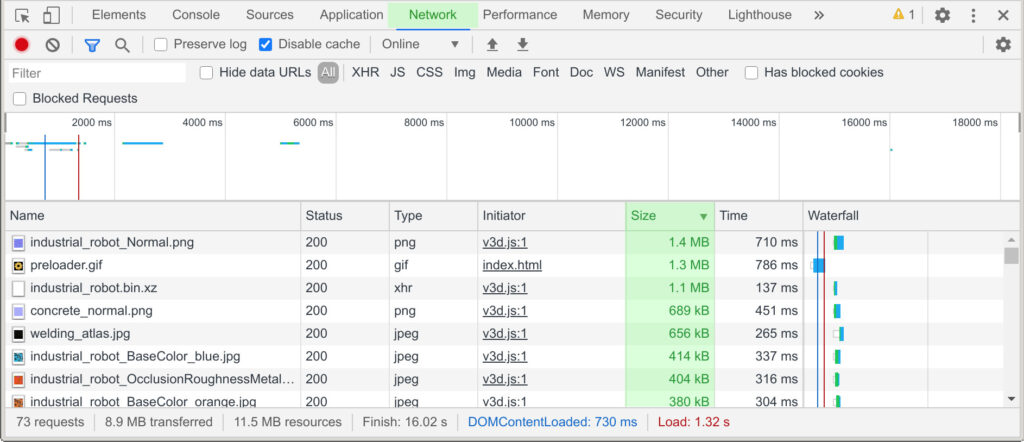As the internet continues to evolve and websites become increasingly complex, the crucial role of load balancing algorithms becomes more evident than ever. Just imagine the chaos if all the incoming web traffic were to be directed to a single server, struggling to handle the overwhelming demand. Fortunately, load balancing algorithms come to the rescue, optimizing performance across multiple web hosts and ensuring a seamless user experience. By delicately distributing the workload across various servers, these algorithms pave the way for enhanced efficiency, improved response times, and reliable scalability. So, let us embark on a journey into the world of load balancing algorithms, unraveling the intricate mechanisms that lie at the heart of optimizing performance across web hosts.
Introduction: Load Balancing Algorithms and Their Importance in Web Hosting

With the rapid growth of the internet and the increasing number of web users, the demand for efficient and reliable web hosting has become paramount. In this digital era, where every millisecond counts, load balancing algorithms play a crucial role in optimizing the performance of web hosts. These algorithms act as the backbone of web hosting services by evenly distributing incoming traffic across multiple servers, ensuring optimal resource utilization and seamless user experience.
Load balancing algorithms leverage complex mathematical calculations and sophisticated techniques to distribute workload efficiently while avoiding server overloads. By intelligently routing incoming requests, these algorithms ensure that no single server becomes overwhelmed, preventing downtime and ensuring high availability. This dynamic allocation of traffic not only improves performance but also enhances scalability, as new servers can be easily added or removed from the load balancing pool as per demand.
To achieve efficient load balancing, various algorithms are employed, each with its own strengths and characteristics. Some popular examples include Round Robin, Weighted Round Robin, Least Connection, and IP Hash. Round Robin, for instance, assigns incoming requests equally to each server in a cyclical manner, whereas Weighted Round Robin assigns a higher weight to specific servers, distributing the workload proportionally. Least Connection, on the other hand, assigns each request to the server with the fewest active connections, thereby evenly distributing the load across the entire pool. Finally, IP Hash algorithm uses the source IP address of requests to consistently route them to the same server, which is particularly useful for maintaining session data.
In summary, load balancing algorithms serve as the driving force behind efficient web hosting services. By evenly distributing traffic and preventing server overloads, these algorithms play a critical role in optimizing performance and ensuring seamless user experiences. As the internet continues to evolve, load balancing algorithms will continue to evolve as well, adapting to new challenges and enabling web hosting providers to deliver reliable, scalable, and high-performing services to users worldwide.
Different Types of Load Balancing Algorithms: A Comparative Analysis

Load balancing algorithms play a vital role in optimizing performance across multiple web hosts. With the advent of cloud computing and the growing demand for seamless web experiences, implementing effective load balancing strategies has become paramount. In this post, we will dive into the world of load balancing algorithms, analyzing their different types and providing a comparative analysis to help you make informed decisions for your web infrastructure.
1. Round Robin:
– Distributes incoming traffic equally across all available servers.
– Ideal for environments with similar server specifications.
– Offers simplicity and easy implementation.
2. Weighted Round Robin:
– Assigns different weights to servers based on their capabilities.
– Allows the allocation of more traffic to higher-performing servers.
– Enables efficient resource utilization and enhanced scalability.
3. Least Connections:
– Directs incoming requests to the server with the fewest active connections.
- Ensures all servers are equally utilized.
- Provides an automatic adjustment mechanism for dynamic traffic loads.
4. IP Hash:
– Uses the client’s IP address to determine which server to route the request to.
– Guarantees that the same client is always directed to the same server.
- Highly suitable for maintaining session persistence and stateful applications.
In conclusion, choosing the right load balancing algorithm is crucial for maximizing the performance and reliability of your web applications. Each algorithm has its strengths and weaknesses, so it is important to carefully consider your specific requirements and workload characteristics. By understanding the comparative analysis of these different types, you can elevate your web hosting infrastructure to new levels of efficiency and responsiveness.
Understanding Round Robin Algorithm: Pros and Cons for Web Hosts

The Round Robin Algorithm is a popular load balancing technique used by web hosts to optimize performance across their server infrastructure. This algorithm evenly distributes incoming traffic among multiple servers, ensuring that each server handles an equal amount of requests. By employing this algorithm, web hosts can effectively minimize server overload and maximize resource utilization.
There are several pros associated with using the Round Robin Algorithm for web hosts. Firstly, it provides a simple and easy-to-implement solution for balancing workload across servers. With a round robin approach, requests are processed on a first-come, first-served basis, ensuring fairness in distributing the load. Additionally, this algorithm offers scalability benefits as new servers can be easily added or removed from the rotation without disrupting the overall system. Moreover, the Round Robin Algorithm provides fault tolerance by allowing servers to be taken offline for maintenance or upgrades, without causing downtime for users. However, this algorithm might not be suitable for all scenarios. It can result in performance inconsistencies if servers have different capabilities. Additionally, if one server becomes overloaded or fails, the Round Robin Algorithm does not take that into consideration and continues directing traffic to the affected server. Therefore, it is essential for web hosts to carefully evaluate the pros and cons before implementing this algorithm and consider alternatives if necessary.
Advanced Load Balancing Techniques: Weighted Round Robin and Least Connections

In the world of web hosting, load balancing algorithms play a crucial role in optimizing performance and ensuring a seamless user experience. While traditional load balancing methods evenly distribute requests across multiple servers, advanced techniques like Weighted Round Robin and Least Connections have emerged as powerful tools to further enhance efficiency.
Weighted Round Robin allows web hosts to assign a predetermined weight to each server in their network. This weight determines the proportion of requests each server receives, enabling administrators to allocate more resources to high-capacity servers and prioritize traffic accordingly. By fine-tuning the distribution of load based on server capacity, Weighted Round Robin helps streamline operations and prevents bottlenecks from impeding overall performance.
On the other hand, Least Connections takes a different approach by dynamically assigning requests to the server with the fewest active connections. This intelligent technique ensures that the workload is evenly distributed among servers, effectively minimizing response time and maximizing resource utilization. With a focus on efficient workload management, Least Connections is especially effective in scenarios where certain connections require more processing power than others.
Implementing these advanced load balancing techniques not only optimizes performance across web hosts but also enhances scalability and reliability. Whether it’s Weighted Round Robin or Least Connections, these algorithms offer flexible means of workload distribution, allowing web hosting services to effortlessly handle increasing traffic demands and adapt to varying network conditions. Through the integration of these smart techniques, web hosts can effectively balance the load, enhance user experience, and ensure smooth and uninterrupted access to websites and applications.
Exploring Dynamic Load Balancing Algorithms: Advantages and Considerations

Dynamic load balancing algorithms are essential tools for optimizing performance across web hosts. These algorithms distribute incoming network traffic efficiently, ensuring that no single server becomes overwhelmed and causing delays or downtime. By intelligently distributing the workload, load balancing algorithms help to enhance the overall performance, reliability, and scalability of web applications.
There are various advantages to implementing dynamic load balancing algorithms. Firstly, they improve resource utilization by evenly distributing traffic across multiple servers, preventing any single server from becoming overloaded. This not only improves the response time for users but also maximizes the efficiency and capacity of the server infrastructure. Additionally, load balancing algorithms allow for seamless scalability, as new servers can be easily added to the environment to handle increased traffic demands. Moreover, these algorithms provide fault tolerance by automatically rerouting traffic away from servers that are experiencing issues or downtime, minimizing the impact on users. Overall, dynamic load balancing algorithms play a crucial role in optimizing web host performance and ensuring a smooth, uninterrupted user experience.
Choosing the Right Load Balancing Algorithm for Your Web Host: Factors to Consider

When it comes to optimizing performance across web hosts, choosing the right load balancing algorithm is crucial. With a wide range of options available, it can be overwhelming to select the most suitable one for your specific needs. To help you make an informed decision, here are some key factors to consider:
1. Traffic patterns: Analyzing your website’s traffic patterns is essential in determining which load balancing algorithm to use. Different algorithms are designed to handle specific types of traffic more effectively. For instance, if your website experiences unpredictable traffic spikes, a dynamic algorithm like Least Connections or Weighted Round Robin might be ideal. On the other hand, if your traffic is more consistent, algorithms such as Round Robin or IP Hash can evenly distribute the load.
2. Server capabilities: Understanding the capabilities of your web hosting servers is crucial in assessing which load balancing algorithm is most suitable. Take into account factors such as server processing power, memory, and network bandwidth. Certain algorithms, such as Least Connections or Least Time, may place a heavier burden on the servers due to the increased load balancing calculations. Ensure that your servers can handle the algorithm you choose without causing performance degradation.
3. Load distribution requirements: Consider the desired load distribution across your web hosts. Do you need an algorithm that evenly distributes traffic across all servers or do you require a more sophisticated approach that can prioritize certain servers based on their capacities? Algorithms like Weighted Round Robin or Least Time offer more granular control over load distribution, allowing you to optimize performance based on specific server capabilities.
4. Scalability: If you anticipate your website to grow in the future and require additional servers, scalability becomes an important factor to consider. Some load balancing algorithms inherently support scalability while others may pose challenges when it comes to adding or removing servers. Algorithms like consistent hash or dynamic ratio load balancing allow for seamless scalability by redistributing the load dynamically.
By carefully analyzing these factors, you can choose the load balancing algorithm best suited for your web hosting needs, ensuring optimal performance and a seamless user experience. Remember, the right algorithm can make a significant difference in efficiently distributing the workload across your web hosts. So take your time, evaluate your requirements, and choose wisely.
Optimizing Performance with Load Balancing: Best Practices and Recommendations

Load balancing algorithms play a crucial role in optimizing the performance of websites across multiple web hosts. By evenly distributing incoming network traffic, they ensure efficient resource utilization and prevent any single server from becoming overwhelmed. In this post, we will explore the best practices and recommendations for load balancing algorithms, enabling you to achieve a highly available and scalable web infrastructure.
When implementing load balancing, it is essential to consider the various algorithms available. Round Robin is a widely used method that distributes incoming requests equally among the available servers. This simple and straightforward approach ensures that each server gets its fair share of traffic. Another popular algorithm is Least Connection, which directs new requests to the server with the fewest active connections, ensuring a balanced workload. Additionally, Weighted Round Robin assigns specific weights to servers, allowing you to prioritize certain servers over others based on their capacities or performance levels.
To maximize the efficiency of load balancing, it’s important to consider session persistence. Sticky sessions can be implemented using source IP affinity or cookie-based affinity, ensuring that requests from the same user are directed to the same server. This is particularly beneficial for applications that require session consistency. Load balancing algorithms can also be complemented with health checks that monitor the availability and performance of servers. By periodically checking server health, you can remove any failed or underperforming servers from the active pool, preventing them from impacting overall system performance.
Implementing load balancing algorithms that suit your specific needs and infrastructure is crucial for achieving optimal website performance. By distributing traffic evenly across multiple servers and implementing session persistence, you can create a robust and highly available web environment. The selection of the most appropriate algorithm, along with regular health checks, lays the foundation for a scalable and efficient web hosting solution.
Conclusion: Enhancing Web Hosting Performance Through Load Balancing Algorithms

The recent advancements in load balancing algorithms have revolutionized the way web hosts optimize their performance. By distributing incoming network traffic across multiple servers, these algorithms ensure efficient resource utilization, minimize response times, and ultimately enhance the overall user experience. One such algorithm is round-robin, where each server takes turns in handling incoming requests, thus preventing any one server from becoming overwhelmed. Another technique is weighted round-robin, where servers are assigned different weights based on their capabilities, allowing for a more balanced distribution of traffic.
In addition to these basic algorithms, more sophisticated approaches like least connections and IP hash bring further performance enhancements. The least connections algorithm directs incoming requests to the server with the fewest active connections, preventing bottlenecks and optimizing resource allocation. On the other hand, IP hash uses the client’s IP address to determine which server should handle the request, ensuring that a client is consistently directed to the same server for a more personalized experience. These load balancing algorithms, when implemented effectively, significantly boost web hosting performance and have become essential tools in managing high traffic websites effectively. With continuous advancements in technology, we can expect further improvements in load balancing algorithms and an even more optimized web hosting experience. As we reach the metaphorical end of our discussion on load balancing algorithms and their prowess in optimizing performance across web hosts, let us reflect on the intricacies we have unmasked and the possibilities they unfurl.
Load balancing, like a skilled conductor orchestrating a symphony of web traffic, beckons us to embrace a harmonious dance between efficiency and responsiveness. Our exploration of various load balancing algorithms has illuminated the path towards achieving equilibrium in this digital world, where websites strive to effortlessly cater to the growing demands of users.
From the gracefulness of Round Robin to the sagacity of Weighted Round Robin, these algorithms have unveiled a realm of possibilities. They empower administrators to allocate web traffic with precision, ensuring that no one web host becomes overburdened while others languish in idleness. These algorithms, one might say, are the virtuosos behind the symphony of a well-balanced website.
Yet, with every melody, there are challenges to overcome. The intricacies of identifying the appropriate algorithm for a specific scenario, the art of adapting to dynamic traffic patterns, and the eternal tug-of-war between simplicity and sophistication—all these threads intertwine to form the tapestry of load balancing.
Nonetheless, the quest for excellence shall not falter. The realm of load balancing algorithms, like ever-evolving compositions, will continue to evolve, embrace improvements, and adapt to the ever-changing landscape of the web.
As you navigate the boundless corridors of cyberspace, may this enlightening voyage into load balancing algorithms inspire you to orchestrate elegant symphonies of web traffic. May your websites sail effortlessly, like a graceful swan gliding through a tranquil lake, traversing the realms of speed, responsiveness, and reliability.
With that, we bid adieu to our exploration, the curtains gracefully descending on this symphony of knowledge. Remember, dear reader, in the fluid realm of load balancing algorithms, it is the artistry of optimization that propels our digital world toward its crescendo of peak performance.
